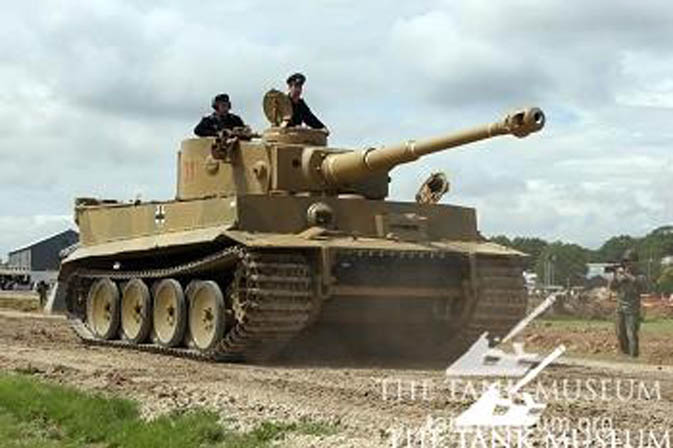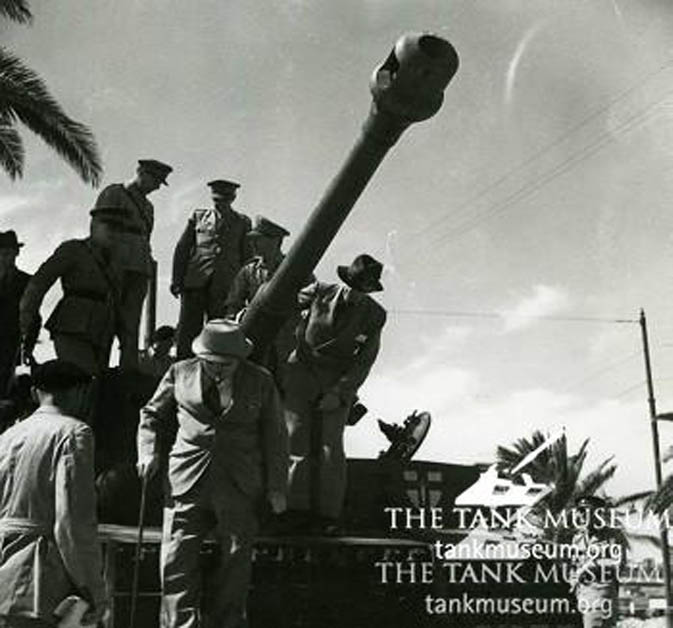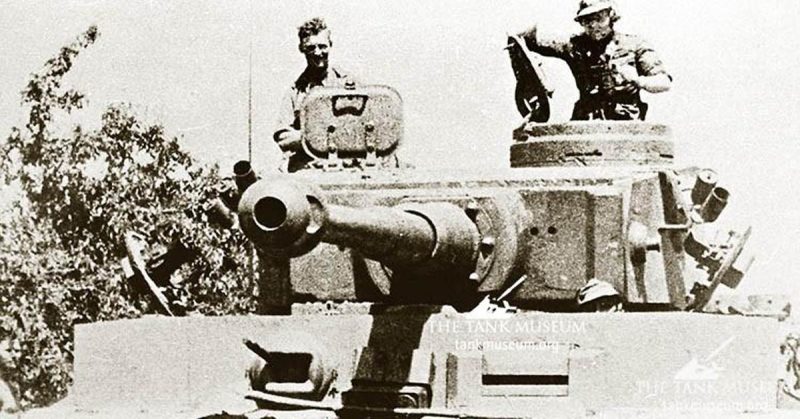Was the Tiger really the King of the Battlefield in Word War Two? Few tanks inspire as much awe and fascination as The Tiger Tank, but does it warrant its reputation?
Tiger 131
On display at The Tank Museum since the 1960’s, Tiger 131 towers above its Allied contemporaries in size, stature and reputation.It is a fighting machine that has gained almost mythical status, being the one tank that almost all Museum visitors recognise. Today, only six Tiger tanks remain, and
Today, only six Tiger tanks remain, and Tiger 131 is the only one of those that has been fully restored to running condition – with the help of a Herritage Lottery Fund grant of £50,000.
As a result, the Tiger is arguably the Museum’s most famous exhibit; drawing visitors from the across the world on the occasions that she can be seen running in the Museum arena. But it could also be argued that the Museum houses other tanks that are more historically important. So what is it about The Tiger, amongst such an exceptional collection of vehicles, that remains so captivating and enduring?
Tiger: The Legend

Tank Museum Historian David Fletcher believes it is because legend rather than hard facts have coloured our perception of the Tiger and the impact it had during World War Two.
Such legends have arisen from war stories; some horrifically accurate, others laden with exaggeration and misidentification. Others arose from the contemporary German propaganda machine, who reinforced the reputation of the Tiger through the exploits of Tiger aces like Michael Wittman and Otto Carius. Since the war, Hollywood has played its part in securing the legend of the Tiger. Successive generations of war movies portray them as virtually indestructible killing machines that inspired nothing but terror in those who faced them.
But all legends are rooted in fact. David said; “There is no doubt that the Tiger I was a formidable weapon. The 88mm gun was very effective and extremely accurate while the armour was proof against most contemporary anti-tank guns at anything but the closest range. Every contemporary Allied tank was vulnerable to the Tiger I at 2,000 metres; in contrast most Allied tanks had to close to within a few hundred meters to stand any chance of damaging the Tiger.”
The Tiger was introduced in 1942 and saw action in North Africa, Italy, Russia and North West Europe. But it wasn’t until the middle of 1944 that the British and Americans were able to field a tank with a gun capable of penetrating the Tiger’s armour – and these were only available in small numbers until the last few months of the war.

“The British 17pdr gun was placed in a small number of Sherman Tanks (to create the Sherman Firefly) before D-Day,” said David, “But by this point, the Tiger had already gained an important psychological dominance of the battlefield. British crews were all too aware of the inferiority of their tanks when faced with Tigers, and this certainly had an impact on the performance of inexperienced tank crews, who were perhaps all too eager to assume every German tank they encountered was a Tiger, and think it wise to back off.”
Issues and Problems
Even now, the Tiger looks modern amongst its contemporaries. Designed to intimidate, one could imagine the confidence the Tiger would have inspired in its crews. But whilst the armament and armour may well have been ahead of its time, it was more than the engineering standard of the day could cope with and this presented the crews and engineers with major logistical and mechanical issues.
“The Tiger was so wide it had to be narrowed down to travel by rail,” explains David. “This was done by changing both sets of tracks, which dramatically slowed the pace of transportation to where the vehicles were needed, and in bad conditions, such as those encountered on the Eastern Front, the overlapping wheels trapped mud and ice sufficient to bring the big tank to a halt on the battlefield.”
“The engine itself was vastly underpowered for a vehicle of the Tigers size and weight. It was particularly prone to fires and malfunctions, and the gearbox was equally vulnerable to the operational stresses placed on it. Both the engine and gearbox were difficult to get at, so to replace parts the repair crews were faced with the task of lifting the turret clear of the tank to fix even common problems. It would probably be fair to say that more Tigers were taken out of action through mechanical failure than by enemy activity.”
But if there is one fact above all others that can illustrate the true role the Tiger tank in World War Two, it is in the numbers produced. A total of 1,354 Tiger tanks were produced in the war, and these were distributed across four theatres of war. Compare this with the 55,000 odd Sherman tanks that were built by the US and the 70,000 odd T34’s produced by the USSR, and The Tiger tanks become a statistical insignificance.

“The reality of the Tiger in the Second World War is that it was a formidable opponent when (and if) it was able to make it into the field, but there were far too few of them to cause anything more than tactical inconvenience to the Allies,” noted David. “The small number of units available to German commanders meant they could only be used to plug gaps and effect local counter attacks following Allied advances. These could be devastatingly successful, as Michael Whitman showed at Villers-Bocage in Normandy when he stopped the 7th Armoured Division in its tracks.”
One can speculate what may have happened if Germany had managed to produce more Tiger tanks; but Germany went on to produce other heavy tanks and ultimately German industry could not keep up with the production lines in the USA and USSR.
Whilst the Tiger Tank certainly represented a step change and great ambition in the design and specification of fighting vehicles, the reality of its impact on World War Two is all too frequently overstated. The land war was a war of quantity over quality, and quantity inevitably was the victor.
A message from The Tank Museum:
“Please Support Us: As a charity, we rely on public support for all our activities. Our work is funded entirely by people like you. With your support, we can continue to create content. With the right support we might be able to do it more regularly – and can be even more ambitious. Please Click on the Banner Below.”
Thanks to the Tank Museum for this Blog, which originally appeared here.

